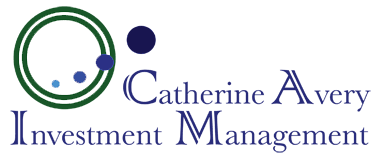Investments with Heart –Socially Responsible Investing
by Catherine AveryDid you know that you can put your money where your heart is? Even if your heart is with the green, the renewable and the environmentally sound? Socially responsible investing (SRI), or aligning your money with your values, is skyrocketing as millions of Americans begin to take an active stand in how and where their money is used. Once the prerogative of activists, religious groups and trade unions SRI today is available to anyone with money to invest.
So what exactly is SRI? Wikipedia defines it as, “The intention to maximize financial return and social good by favoring corporate practices that are environmentally responsible, support workplace diversity, and increase product safety and quality.” Another way to look at it is as simply a way for people to express their values through investing. People can support companies that they feel are doing the right thing. What most investors don’t realize is that when they buy a stock, they are buying ownership in a company and therefore giving the company capital to go out and grow the business – and not all companies have the same values.
However, you want to define it, the bottom line is SRI represents companies that meet certain standards of Corporate Social Responsibility (CSR), whether that involves the environment, health and safety, diversity and human resources policies, human rights or the supply chain. And it represents investors becoming conscious of their financial “footprint” on earth and their power to affect change. It’s an exciting idea – our dollars actually working where we want them. With millions of investment dollars at their disposal, Americans have a very real opportunity to make a difference in the world through SRI.
To give you an idea of the scope of SRI’s upward trajectory take a look at these numbers. From 1995 to 2005 socially responsible investment assets grew four percent faster than the entire universe of managed assets in the United States, according to the 2005 Report on Socially Responsible Investing trends in the US. The same report notes that SRI assets rose more than 258 percent from $639 billion in 1995 to $2.29 trillion in 2005, while the broader universe of assets under professional management increased less than 249 percent from $7 trillion to $24.4 trillion over the same period. Today nearly one out of every ten dollars under professional management in the United States is involved in SRI. And it’s not just the US that’s buzzing. The UK, France, Italy, Sweden and Belgium account for 63.7% of the world’s SRI funds.
So how can you get involved? One way to play the green investing sector is via exchange-traded funds (ETFs). An ETF is a basket of stocks that trade on an exchange just like a stock but have a much lower fee than mutual funds. Two favorite ETFs are the Market Vectors ETF Global Alternative Energy (GEX) and Powershares WilderHill Clean Energy Portfolio (PBW.) GEX is comprised of thirty of the largest, most actively traded alternative energy companies from around the world. Companies in the index generate over 50% of their revenues from alternative and/or related technologies and are engaged in solar, wind, biofuels, water and geothermal. PBW focuses on greener and generally renewable sources of energy as well as technologies that facilitate cleaner energy.
You can also mix it up a bit with traditional companies – GE and
United Technologies are household names that have recently
jumped on the SRI bandwagon – and ETFs. Purer plays i.e.
companies devoted solely to alternative forms of energy, for
example, may initially sound more exciting but often carry
higher risks and volatility. The companies themselves may not be
as financially strong and have difficulty raising the necessary
capital to grow.
* * * * * *
Catherine Avery is President of Catherine Avery Investment
Management (CAIM), LLC, an investment management firm based in
New Canaan, CT.
She can be reached at
cavery@catherineaveryinvest.com,
http://www.catherineaveryinvest.com or 203.966.2712

